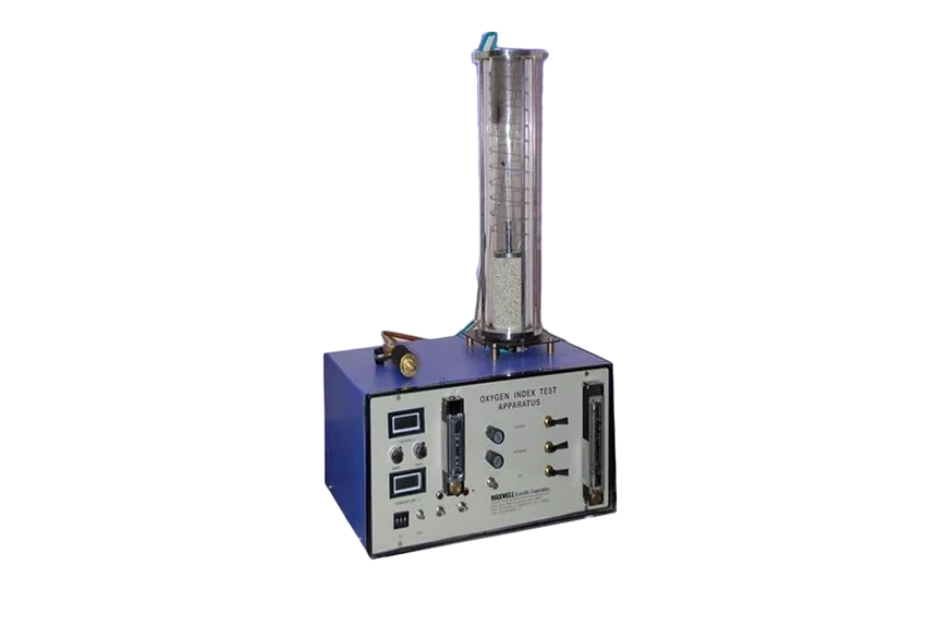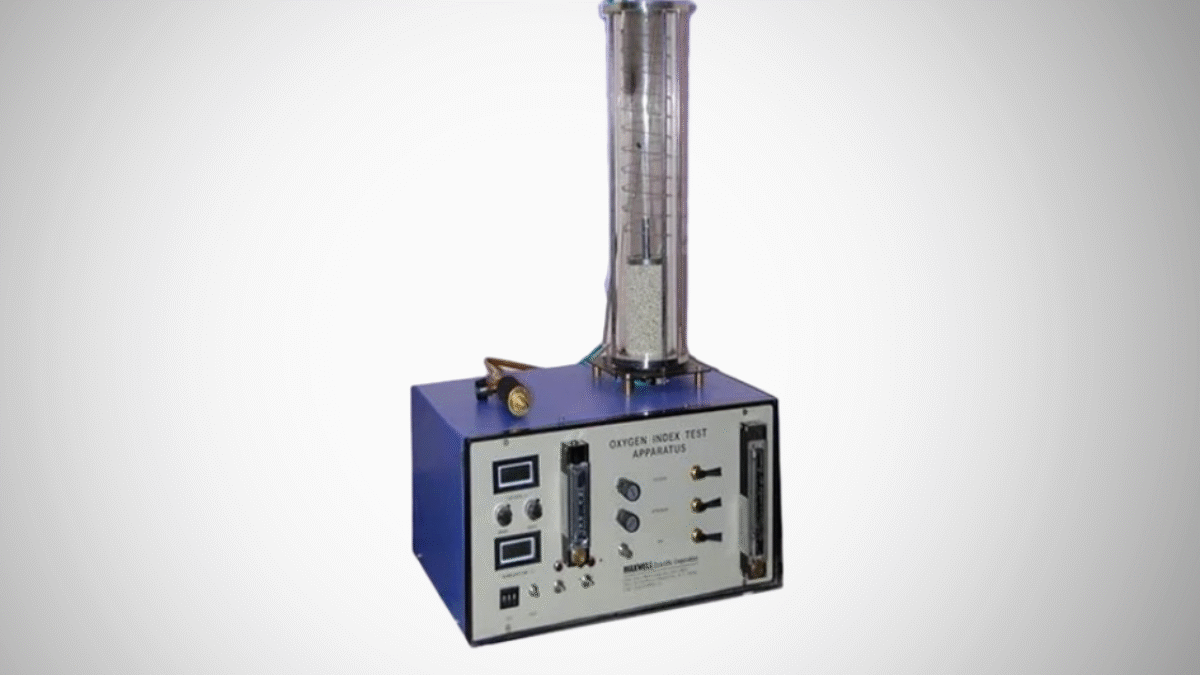Limited Oxygen Index Testing As Per ISO 4589-2
Role of Limited Oxygen Index Testing (ISO 4589-2) in Modern Material Safety
Introduction
- Fire safety is non-negotiable when it comes to selecting materials for high-risk applications such as electronics, transportation, and construction. Among the various fire testing methods, the Limited Oxygen Index (LOI) test, defined under ISO 4589-2, offers one of the most reliable ways to quantify a material’s flammability.

What Is Limited Oxygen Index (LOI) Testing?
The Limited Oxygen Index is the minimum concentration of oxygen, expressed as a percentage, that is needed to support the combustion of a material in a nitrogen-oxygen atmosphere. The higher the LOI, the less flammable the material.
Unlike standard flammability tests that provide a pass/fail outcome, LOI testing offers a numerical value, giving a comparative understanding of a material’s flame resistance.
ISO 4589-2: Key Elements of the Standard
The ISO 4589-2 standard outlines the methodology for LOI testing at ambient temperatures (typically 23°C). Here’s how the process works:
Sample Dimensions: Rectangular test specimens (typically 10 mm x 100 mm) are cut or molded to size.
Test Chamber: The sample is vertically positioned in a glass column where a precise oxygen/nitrogen gas mix is controlled.
Ignition Process: A pilot flame is applied to the top of the specimen.
Measurement: The oxygen level is varied until the minimum concentration that supports sustained burning is determined.
This standardized procedure ensures accuracy and repeatability in determining fire-retardant properties across a wide range of materials.
Why LOI Testing Matters?
Materials used in consumer and industrial applications must often meet strict fire safety requirements. The LOI test plays a critical role in:
Material Comparison: Quantifying differences in flame resistance between formulations.
Product Certification: Satisfying fire resistance standards in safety audits.
Material R&D: Supporting innovation in polymer blending and flame-retardant additives.
Risk Mitigation: Helping industries reduce liabilities associated with fire hazards.
Limiting Oxygen Testing in Chennai:
Located in one of India’s leading manufacturing hubs, Kiyo R&D Center and Laboratory offers cutting-edge testing solutions for flame retardancy. Here’s why businesses across India trust us for limiting oxygen index testing in Chennai:
Fully ISO-Compliant: Our testing protocols follow ISO 4589-2 rigorously, with calibrated instruments and certified procedures.
Modern Infrastructure: We use advanced LOI apparatus with real-time oxygen monitoring and gas flow control.
Expert-Led Analysis: Our scientists provide insights into flame behavior, along with actionable suggestions to enhance fire resistance.
Rapid Turnaround: Fast processing ensures minimal delays in your production or certification timelines.
Industries That Rely on LOI Testing:
LOI testing is not just relevant—it’s critical for industries like:
Electronics: For fire-safe cable insulation, connectors, and enclosures.
Automotive & Railways: To test dashboards, panels, and seat materials for fire retardancy.
Construction: For insulation foams, wall boards, and fire-resistant coatings.
Textiles: In protective clothing and home furnishings to reduce fire risks.
Aerospace: Lightweight, non-combustible materials are essential for aircraft interiors.
Partnering with Kiyo for Material Safety
Whether you’re testing a new formulation or validating existing material specs, Kiyo R&D Center and Laboratory brings unmatched expertise and quality control to the process. Our testing not only helps you meet standards—it helps you exceed them.
How to Initiate Testing with Us
To begin LOI testing:
- Search for “Kiyo R&D Center and Laboratory” online.
- Visit our official site or directory listings to get in touch.
- Submit your samples following ISO 4589-2 size guidelines.
- Receive a detailed report with expert interpretation.

Conclusion
- The Limited Oxygen Index test is a powerful benchmark for flame retardancy, helping industries stay ahead of safety demands. At Kiyo R&D Center and Laboratory, we blend scientific precision with service excellence to deliver the most trusted limiting oxygen testing in Chennai.

